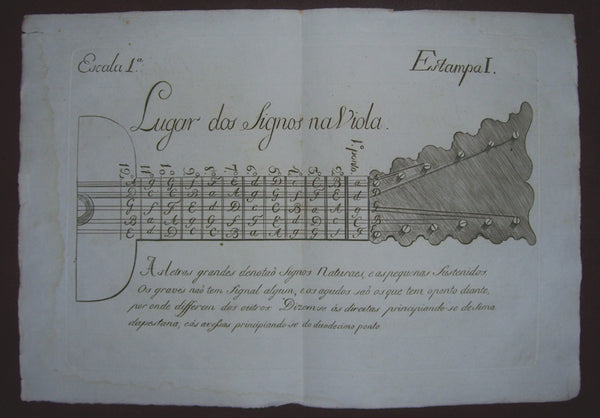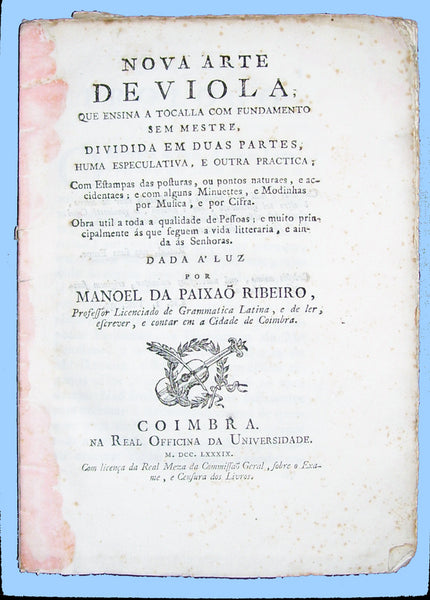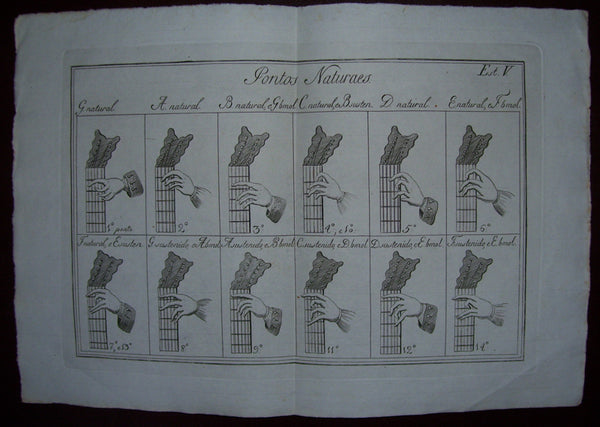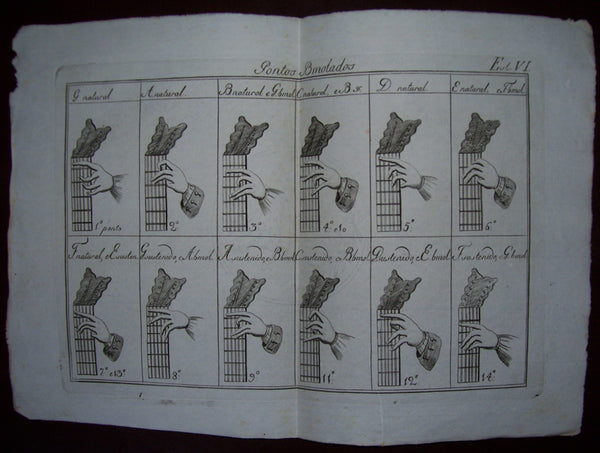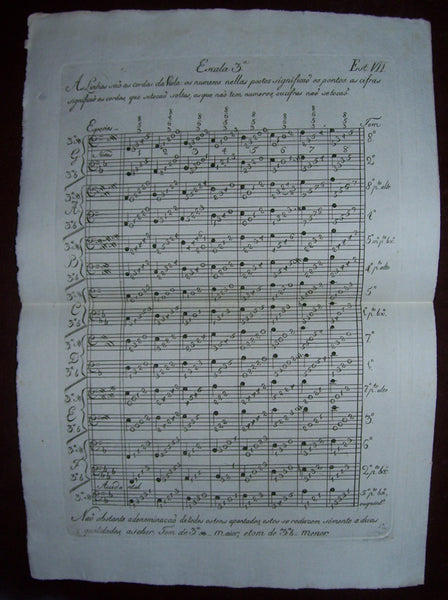Very early work on guitar
[Guitar]. Paixo Ribeirõ, Manoel da. Nova arte de viola, que ensina a tocalla com fundamento sem mestre, divida em duas partes, huma especulativa, e outra practica; Com Estampas das posturas, ou pontos naturaes, e accidentaes; e com alguns Minuettes, e Modhinas por Musica, e por Cifra. Obra util a toda a qualidade de Pessoas; e muito principalmente ás que seguam a vida litteraria, e ainda ás Senhoras.
Coimbra: Real Officina da Universidade..., 1789. First edition. Quarto. [1] leaf, V, 51 pp. With eight double page engraved plates. Uncut and unbound as issued with traces of wrappers. Generally a fine copy in original condition with the engraved plates unsewn so that they would sit flat on the music stand. Very light marginal stain to two plates, more to title page and prelims
First Edition, a desirable, unsophisticated copy of this rare 18th century source of instrumental pedagogy on the Portuguese baroque guitar (or viola). The work is divided into both a practical section; explaining and illustrating the tuning, fingering, notational signs and exercises; followed by a number of minuets and modinhas for entertaining and personal enjoyment. The five course baroque guitar is tuned as the present day guitar without the lower E course. The instrument uses twelve strings with three double-string courses and two triple-string courses. The author notes bourdons are required on the 4th and 5th course, and an upper octave string should also be used on the 3rd course. The 3rd course is called "toeira" or "singing string." Because of the bright strumming qualities of the viola it was especially popular for accompaniment of folk songs and dances as well as a solo instrument. A guitar of this type, by Diego Costa, is dated 1715 and preserved in the musical instrument museum of the University of Leipzig. Selch. The Legacy of Sebastian Virdung: 58 (illustrated); RISM A/I, P 647 & B VI, 633; Eitner VII, 293; Wolfheim I, 897. (#kfk260)





